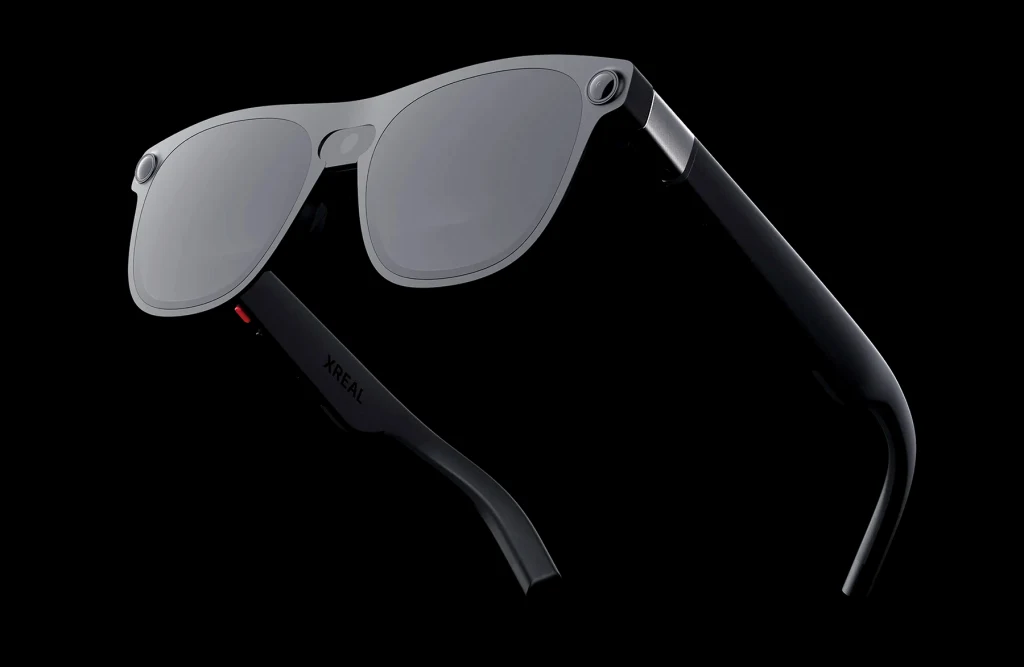Well over a decade on from its initial launch, it’s safe to say that Google Glass was not a success. While the product had some forward-thinking ideas, it’s generally not a good sign when your product leads to the coinage of a brand-new insult. The design was off-putting and the technology wasn’t ready—and neither was society.
Today, things are a little different. Meta and Ray-Ban’s smart glasses are a hit, despite offering the same camera capabilities that turned so many off Google Glass in the first place. It helps, of course, that they just look like normal Ray-Bans.
So for Google’s second swing at the product category, it’s focusing on design and functionality. At its I/O keynote this week, Google’s XR VP Shahram Izadi gave a snappy but convincing demonstration of how the company plans to attack the form factor this time around.
Android apps and Gemini
While Google’s glasses strategy falls under Android XR, the same operating system powering Samsung’s upcoming Vision Pro competitor, it made sure to emphasize that the platform will appear in different forms on a range of hardware. “We believe there’s not a one size fits all for XR, and you’ll use different devices throughout your day,” Izadi said, noting that an immersive headset like Samsung’s is better suited to movies or games, while lightweight glasses are designed for on-the-go use as a complement to a phone.
The connecting thread between the form factors is Android apps and Gemini. Google says it’s adapting its own apps like Maps, Photos, and YouTube for XR, while mobile and tablet apps will work as well—although presumably not on glasses, unless they get some significant updates from developers.
A multi-device future
The Gemini AI assistant, meanwhile, ought to work seamlessly across both headsets and glasses. Elsewhere at I/O, Google placed an emphasis on how Gemini will benefit when you share more personal information, which positions it well for a multi-device future—including the phone. Meta, of course, will have something to say about that after recently converting its Ray-Ban companion app into a more general app for Meta AI.
The standard spec for Android XR glasses covers devices with and without an in-lens screen. Google didn’t go into details about the display technology involved, but it’s the most obvious path to a functional improvement over the current Meta Ray-Bans.
Lately I’ve been using Gemini with Google’s Pixel Buds Pro 2—supposedly “built for Gemini AI”—and while it works well for what it is, I think AI chat interfaces are a lot less compelling when you can’t read the responses. Beyond Gemini, the ability to see notifications, Maps directions and real-time language translations could make a huge difference to the smart glasses experience.
Design Partners
Design is obviously critical to any wearable technology, and Meta made a strong move by tying up dominant eyewear company EssilorLuxottica—parent of Ray-Ban and many other brands—to a long-term partnership. The Meta Ray-Bans would not be anywhere near as popular if they weren’t Ray-Bans.
In response, Google has partnered with U.S. retailer Warby Parker and hip South Korean brand Gentle Monster for the initial batch of Android XR glasses. No actual designs have been shown off yet, and it’ll be hard to compete with the ubiquitous Wayfarer, but the announcement should ensure a solid range of frames that people will actually want to wear.
Google is also working with AR company Xreal on a pair of developer-focused XR glasses called Project Aura. Xreal is a leader in the nascent space for smart glasses; I’ve been using its Air 2 glasses for a while and have found them to be great for watching movies or extending a MacBook display on the go. Project Aura is intended to be more capable than the first set of display-equipped Android XR devices that hit the market—it’ll hook up to an external processing puck that handles computational tasks.

‘Normal glasses’
Google cofounder Sergey Brin weighed in on the company’s past ventures into glasses in an I/O interview with Alex Kantrowitz’s Big Technology Podcast this week. “I learned a lot,” he said. “Definitely feel like I made a lot of mistakes with Google Glass, I’ll be honest. I’m still a big believer in the form factor, so I’m glad we have it now. And now it looks like normal glasses and doesn’t have the thing in front.”
Beyond the form factor, Brin pointed to the rise of AI as a game changer for smart glasses capability, allowing them to “help you out without constantly distracting you.” He also noted that this time Google is working with hardware partners rather than attempting to wrangle efficient manufacturing by itself.
Compelling and deliverable
Overall, Google’s take on Android XR for glasses looks pretty compelling at this stage—but more importantly, it feels deliverable. It’s still early, of course, and lifestyle products like this aren’t necessarily well-suited to keynote demonstrations.
But as someone who uses Meta Ray-Ban and Xreal glasses regularly, it isn’t hard to imagine a world in which Android XR glasses are ultimately able to combine the best qualities of both. Now Google has to execute on the design and the software.
Autentifică-te pentru a adăuga comentarii
Alte posturi din acest grup

As the global migrant crisis continues to dominate our airwaves, Welcome.US has triggered a dramatic impact on U.S. immigration, resettling 800,000 refugees across all 50 states. The organization’

Nvidia’s earnings have become some of the most closely watched numbers on Wall Street. The company makes up about 6.5% of the Nasdaq 100, and 5.5% of the S&P 500, so a good quarter can send

One of the most popular smartphone apps in the world has finally come to the iPad. Today, Meta has officially r

President Donald Trump’s media company said Tuesday that institutional i

As the global migrant crisis continues to dominate our airwaves, Welcome.US has triggered a dramatic impact on U.S. immigration, resettling 800,000 refugees across all 50 states. The organization’

Salesforce is buying

Money-losing Japanese automaker
